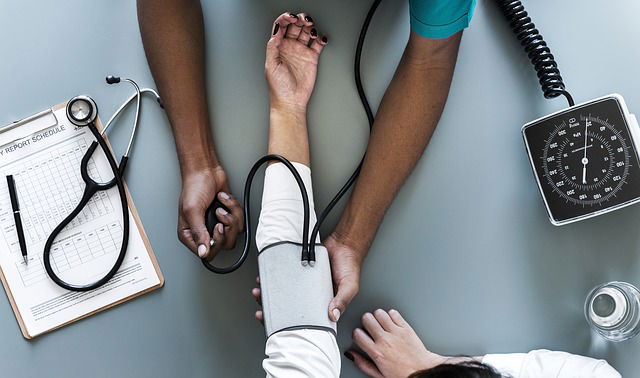
When is high blood pressure dangerous? Medical associations offer widely differing answers.
In the U.S., for example, patients are seen as hypertensive at much lower pressure than patients in Germany.
In a recent study, researchers found that treating patients sooner does not reduce the risk of deadly heart disease, and could even negatively affect their mental health.
The study was conducted by a team working with Prof. Karl-Heinz Ladwig of the Technical University of Munich and the Helmholtz Zentrum München.
In 2017, the American College of Cardiology added a new category to its guidelines for high blood pressure: Stage 1 hypertension.
Under the new standards, doctors are advised to place patients in this category (130-139 mmHg / 80-89 mmHg) on treatment.
For the European Society of Cardiology, that range is defined as “high normal” blood pressure, with no specific action recommended.
The idea behind the U.S. guidelines is to lower blood pressure as early as possible, and by presenting patients with a diagnosis, to encourage them to adopt a healthier lifestyle.
Using data from approximately 12,000 patients, the team assessed the situation in Germany.
They studied the 10-year risk of mortality from cardiovascular disease (CVD) among people in the various hypertension categories in the context of the other risk factors affecting them.
In the newly created category Stage 1 hypertension, the CVD mortality risk was not significantly higher than among patients with normal blood pressure.
Patients in the high-risk category Stage 2 hypertension, where medication is recommended under both the U.S. and the European guidelines, have a much greater risk of dying of heart disease.
At the same time, risk factors such as smoking and a lack of exercise are far more frequent in that group. That shows that many people do not change their lifestyles despite the diagnosis.
The incidence of depression is generally lower among people with dangerously high blood pressure than in the general population.
But depression was significantly more common in one subset of that group: those taking medication to treat their serious hypertension.
Here, depressive moods were reported by around half of all patients, as opposed to just one-third of those not receiving treatment.
The researchers believe that this should be seen as a labeling effect. When people are officially labeled as sick, that has an impact on their mental health.
A previous study by the team showed that, in terms of mortality risk from cardiovascular disease, depression is comparable to high cholesterol levels or obesity.
The American College of Cardiology itself has calculated that the proportion of adults diagnosed with high blood pressure will increase from 32 to 46 percent.
That means 14 percent more who have to deal with the additional mental stress—although their risk of developing a potentially deadly cardiovascular condition is not significantly higher, and despite no real expectation of extra motivation through the diagnosis.
For those reasons, the team believes that it would be a serious mistake to adopt the U.S. guidelines in Europe.
Seryan Atasoy is the first author of the study.
The study is published in the European Heart Journal.
Copyright © 2019 Knowridge Science Report. All rights reserved.
Source: European Heart Journal.



